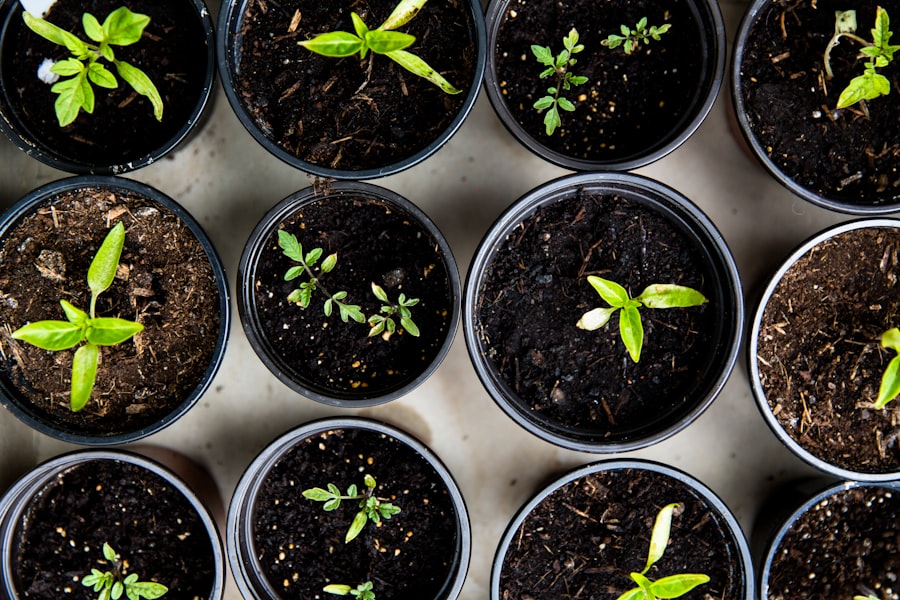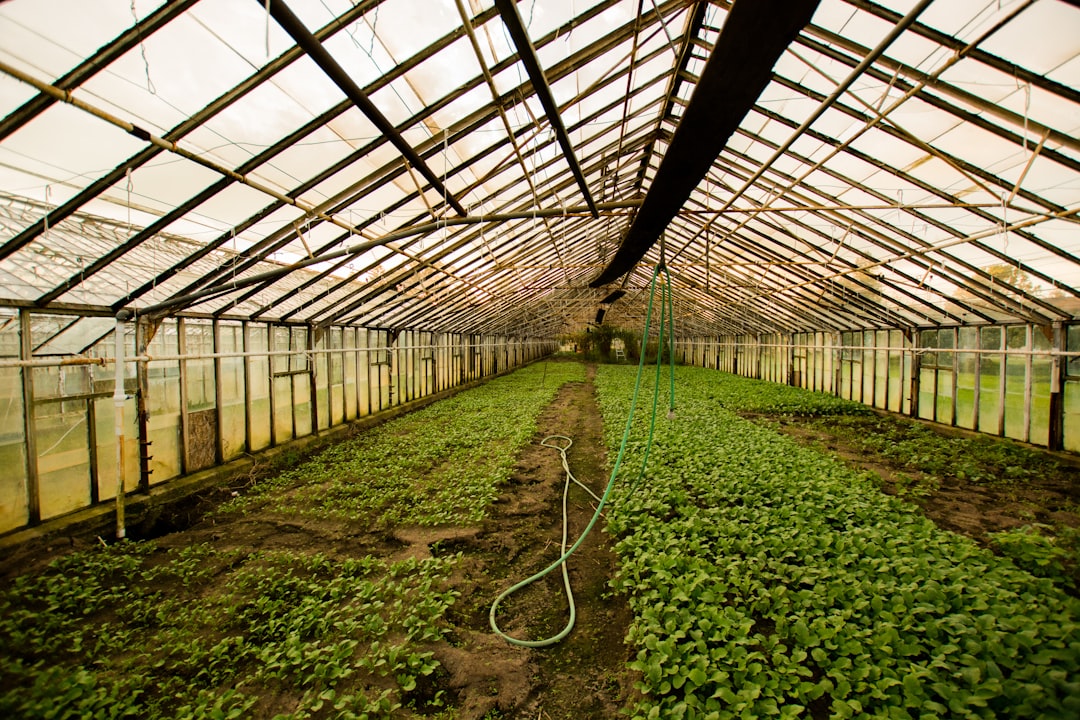Apple tree spacing refers to the distance between individual apple trees in an orchard or backyard setting. It is an important aspect of apple tree cultivation as it directly affects the growth, health, and productivity of the trees. Proper spacing allows for adequate sunlight penetration, air circulation, and nutrient uptake, which are essential for optimal tree growth and fruit production. In this article, we will explore the importance of proper apple tree spacing, factors to consider when spacing apple trees, and recommended spacing guidelines for different types of apple trees.
Key Takeaways
- Proper spacing is crucial for the growth and health of apple trees.
- Factors to consider when spacing apple trees include soil type, climate, and tree variety.
- Dwarf apple trees should be spaced 6-8 feet apart, semi-dwarf trees 12-15 feet apart, and standard trees 18-25 feet apart.
- Home orchards should have apple trees spaced at least 10-15 feet apart, while commercial orchards may require closer spacing.
- Common mistakes to avoid when spacing apple trees include planting too close together and not considering the tree’s mature size.
Importance of Proper Spacing for Apple Trees
Improper spacing of apple trees can have negative effects on their growth and productivity. When apple trees are planted too closely together, they compete for sunlight, water, and nutrients. This can result in reduced fruit yield and poor fruit quality. Additionally, overcrowded trees are more susceptible to diseases and pests as they have limited air circulation, which creates a favorable environment for fungal infections and insect infestations.
On the other hand, proper spacing between apple trees has several benefits. Ample sunlight is crucial for photosynthesis, which is the process by which plants convert sunlight into energy. When apple trees are properly spaced, each tree receives sufficient sunlight throughout the day, allowing for optimal growth and fruit development. Adequate spacing also promotes better air circulation, which helps to prevent the buildup of moisture and reduces the risk of fungal diseases.
Factors to Consider when Spacing Apple Trees
When determining the spacing between apple trees, several factors need to be taken into consideration:
1. Soil type and quality: The type and quality of soil can affect the growth and development of apple trees. Well-drained soil with good fertility is ideal for apple tree cultivation. If the soil is heavy or poorly drained, wider spacing may be necessary to prevent waterlogging and root rot.
2. Climate and weather patterns: Different climates require different spacing between apple trees. In areas with high rainfall or humidity, wider spacing is recommended to allow for better air circulation and reduce the risk of fungal diseases. In colder climates, closer spacing can help provide some protection against frost damage.
3. Apple tree variety: Different apple tree varieties have different growth habits and sizes. Some varieties are more vigorous and require more space, while others are more compact and can be planted closer together. It is important to research the specific variety being planted to determine the appropriate spacing.
4. Rootstock type: Apple trees are often grafted onto rootstocks, which can affect their size and growth characteristics. Dwarf and semi-dwarf rootstocks result in smaller trees that require less space, while standard rootstocks produce larger trees that need more room to grow.
5. Desired tree height and width: The desired height and width of the apple trees should also be taken into account when spacing them. If taller trees are desired, wider spacing may be necessary to accommodate their growth.
Optimal Spacing for Dwarf Apple Trees
Dwarf apple trees are smaller in size and are ideal for small gardens or backyard orchards. They are usually grafted onto dwarfing rootstocks, which restrict their growth and keep them compact. The recommended spacing for dwarf apple trees depends on the rootstock type and variety.
For dwarf apple trees on M9 rootstock, a spacing of 8-10 feet between trees is generally recommended. This allows for adequate air circulation and sunlight penetration while still maximizing space in a small orchard or backyard setting. However, if the soil is heavy or poorly drained, wider spacing may be necessary to prevent waterlogging.
Optimal Spacing for Semi-Dwarf Apple Trees
Semi-dwarf apple trees are slightly larger than dwarf trees but still smaller than standard trees. They are also grafted onto semi-dwarfing rootstocks, which control their size to some extent. The recommended spacing for semi-dwarf apple trees depends on the rootstock type and variety.
For semi-dwarf apple trees on M26 rootstock, a spacing of 10-12 feet between trees is generally recommended. This allows for adequate air circulation and sunlight penetration while still maximizing space in a small orchard or backyard setting. However, if the soil is heavy or poorly drained, wider spacing may be necessary to prevent waterlogging.
Optimal Spacing for Standard Apple Trees

Standard apple trees are the largest in size and require the most space to grow. They are usually grafted onto standard rootstocks, which allow them to reach their full size potential. The recommended spacing for standard apple trees depends on the rootstock type and variety.
For standard apple trees on MM111 rootstock, a spacing of 15-20 feet between trees is generally recommended. This allows for adequate air circulation and sunlight penetration while still maximizing space in a larger orchard or commercial setting. However, if the soil is heavy or poorly drained, wider spacing may be necessary to prevent waterlogging.
Spacing Apple Trees in a Home Orchard
When spacing apple trees in a backyard or small orchard setting, there are several tips to consider:
1. Maximize space: In a limited space, it is important to maximize the number of trees while still allowing for proper spacing. Consider using dwarf or semi-dwarf varieties and rootstocks to achieve this.
2. Plan for future growth: Take into account the potential growth of the apple trees when determining spacing. Consider how much space each tree will need when it reaches its mature size.
3. Allow for access: Leave enough space between rows and individual trees to allow for easy access for maintenance tasks such as pruning, harvesting, and pest control.
4. Consider pollination: Apple trees require cross-pollination from another compatible variety to produce fruit. Ensure that there is enough space between different varieties to allow for effective pollination.
Spacing Apple Trees in a Commercial Orchard
When spacing apple trees in a larger, commercial orchard setting, there are additional factors to consider:
1. High-density planting: High-density planting involves planting apple trees closer together to maximize yield per acre. This requires careful planning and management to ensure proper spacing and adequate resources for each tree.
2. Trellising and training systems: In high-density orchards, trellising and training systems are often used to support the trees and manage their growth. These systems can help optimize spacing and increase productivity.
3. Irrigation and nutrient management: In commercial orchards, irrigation and nutrient management play a crucial role in tree health and productivity. Proper spacing allows for efficient irrigation and nutrient distribution to each tree.
Common Mistakes to Avoid when Spacing Apple Trees
When spacing apple trees, there are some common mistakes that should be avoided:
1. Planting too close together: Planting apple trees too close together can lead to overcrowding, reduced sunlight penetration, and increased disease susceptibility. It is important to follow recommended spacing guidelines for the specific variety and rootstock being planted.
2. Not accounting for root spread: Apple tree roots spread outwards as they grow, so it is important to consider the potential root spread when determining spacing. Planting trees too close together can result in root competition and poor growth.
3. Neglecting site conditions: Site conditions such as soil type, drainage, and climate should be taken into account when spacing apple trees. Failure to consider these factors can lead to poor tree health and reduced productivity.
Achieving the Best Results with Proper Apple Tree Spacing
Proper apple tree spacing is essential for optimal tree growth, health, and productivity. It allows for adequate sunlight penetration, air circulation, and nutrient uptake, which are crucial for fruit development. By considering factors such as soil type, climate, apple tree variety, rootstock type, and desired tree size, growers can determine the optimal spacing for their apple trees.
Whether in a backyard or small orchard setting, or in a larger commercial orchard, proper spacing is key to achieving the best results. By avoiding common mistakes and taking the time to research and plan for optimal spacing, growers can ensure that their apple trees thrive and produce high-quality fruit. So, take the time to properly space your apple trees and reap the rewards of a healthy and productive orchard.
If you’re looking for information on apple tree spacing, you might also be interested in learning how to protect your gaming chair. gaming chairs can be a significant investment, so it’s important to take steps to keep them in good condition. This article from Kepuli.com provides helpful tips on how to protect your gaming chair from damage and extend its lifespan. Check it out here.




Leave a Reply
You must be logged in to post a comment.